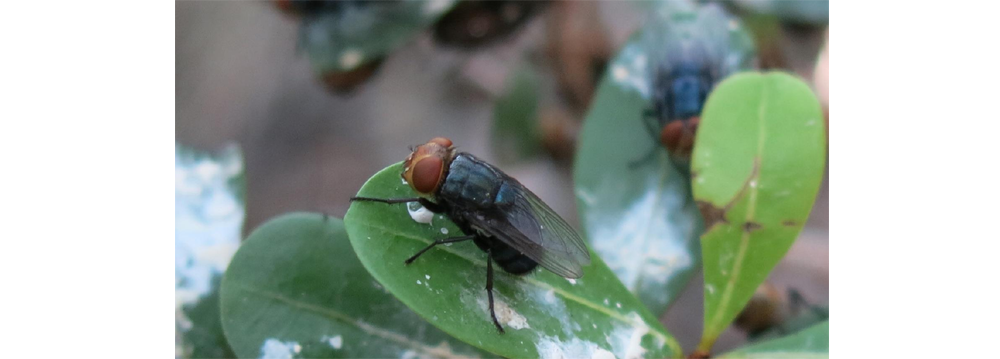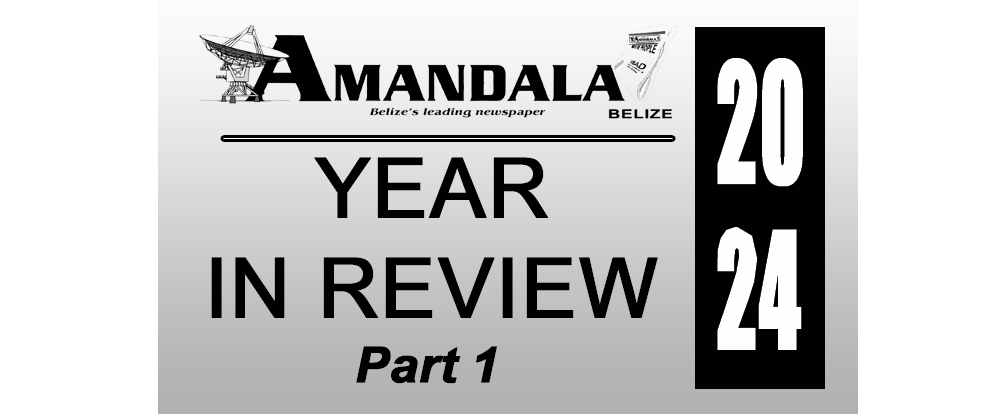

Photo: NWS fly
Second case of New World Screwworm in southern Belize
TOLEDO DISTRICT, Thurs. Jan. 9, 2025
Belize has recorded a second case of New World Screwworm (NWS), and Minister of Agriculture, Hon. Jose Mai said it caught them by surprise. This time, the case was detected in San Pedro Colombia in central Toledo District. Our index case was detected on Thursday, December 26, in Crique Sarco Village; however, in that case, it was suspected that the NWS fly had simply travelled the distance of almost 12 miles in a straight line from the closest case in Guatemala at Modesto Mendez.
The second case was detected on Wednesday, January 1st. The Minister today reported that authorities, including officials from the Belize Agricultural Health Authority (BAHA), the Ministry’s extension officers, and members from the Belize Livestock Producers Association (BLPA), are on the ground executing a house-to-house and farm-to-farm campaign to comb for other cases. However, up to today, no other case has been found or reported. Minister Mai affirmed that “our people have been to every single farm in southern Belize – all along the banks of the Sarstoon River. And everybody is well-informed, well aware that animals cannot come in without being inspected. It’s illegal to bring in animals – first. But if they do, we have to inspect those animals and ensure that they are free of wounds, or if they have wounds, that they are treated and returned where they are coming from.”

Photo: Hon. Jose Mai – Minister of Agriculture, Food Security and Enterprise
As to the genesis of the second case, authorities suspect there was transmission from wildlife to cattle, or that there was movement of cattle from Guatemala to the farm where the infected animal is located. The Minister revealed, “We also discovered that there are farmers in the area and the animals appear to be coming from Guatemala. If we know that, then we can act. So, we’ve acted upon them saying, ‘no animals allowed to come in without inspecting them properly.’ It’s difficult to stop the flow of cattle in all of Central America.”
The Minister conceded that there is no actual evidence to confirm that there has been illegal movement of cattle in this case; however, he shared that the animals in the area, “are very good animals; you can see they are good genetics, so we figure there is some kind of communication between this side and that side … It happens a lot in Honduras and Nicaragua – those borders. farms are shared across borders, and so that has been the problem in Central America.”
BAHA is now setting up a control station in Bella Vista so that all animals coming out of the central Toledo District will now be thoroughly inspected and treated if necessary. According to Minister Mai, the community is “bringing forth their animals; they are treating animals; and so I think if that continues, we will be able to contain that outbreak in Toledo.”
As to this second case impacting our cattle trade with Mexico, the Minister said they continue to dialogue with Mexican officials, and that “Mexico has said to us that not a day will be lost in exportations. As a matter of fact, Mexico had offered to reduce the number of quarantine days from 21 days to 7 days. That is to be finalized now that the holidays are over and that SENASICA is back on track working.” As to the USDA imposing a ban of animal commodities from Belize, Mai said he is awaiting confirmation, but added that cattle from Belize is not exported directly to the US, so even if that were the case, it would not affect Belize.
Related News

St. Croix Woman Arrested for Allegedly Stealing Whirlpool Refrigerator From Home Depot

Amandala Year in Review 2024

Alda Monsanto’s Passing Mourned by Merchants Commercial Bank and Virgin Islands Community

